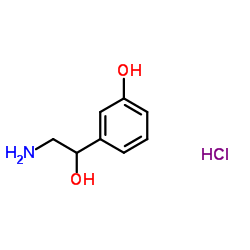Central administration of p-octopamine to mice: assessment of antinociception.
R B Raffa, J R Mathiasen, T L Goode
Index: Eur. J. Pharmacol. 169(2-3) , 317-20, (1989)
Full Text: HTML
Abstract
Administration of p-octopamine by intracerebroventricular (i.c.v.) or intrathecal (i.t.) routes, but not orally, produced antinociception in the acetylcholine-induced abdominal constriction test (ED50 = 24.8 and 3.6 micrograms, respectively). Likewise, i.c.v. and i.t., but not peripheral (up to 200 mg/kg s.c.), administration increased latency in the 48 degrees C hot-plate test (ED50 = 11.5 micrograms i.c.v. and 0.2 micrograms i.t.). These actions were relatively long-lasting and not blocked by naloxone. Antinociception following i.c.v. administration was abolished in reserpinized mice or by pretreatment with i.t. phentolamine (2 micrograms). These results suggest a moderate antinociceptive action of p-octopamine involving non-opioid, reserpine-sensitive, central pathways.
Related Compounds
| Structure | Name/CAS No. | Molecular Formula | Articles |
|---|---|---|---|
 |
Norphenylephrine hydrochloride
CAS:4779-94-6 |
C8H12ClNO2 |
|
Selective synthesis of racemic 1-11C-labelled norepinephrine...
1994-04-01 [Appl. Radiat. Isot. 45(4) , 515-21, (1994)] |
|
Chiral separations on multichannel microfluidic chips.
2005-12-01 [Electrophoresis 26(24) , 4774-9, (2005)] |
|
In vivo alpha(1)-adrenergic lipolytic activity in subcutaneo...
2002-04-01 [J. Pharmacol. Exp. Ther. 301(1) , 229-33, (2002)] |
|
[Therapy of hypotension in pregnancy using norfenefrine hydr...
1992-01-01 [Z. Geburtshilfe Perinatol. 196(1) , 21-5, (1992)] |
|
The effects of m-octopamine on salivary flow rates and prote...
1992-11-01 [Comp. Biochem. Physiol. C, Comp. Pharmacol. Toxicol. 103(3) , 469-76, (1992)] |